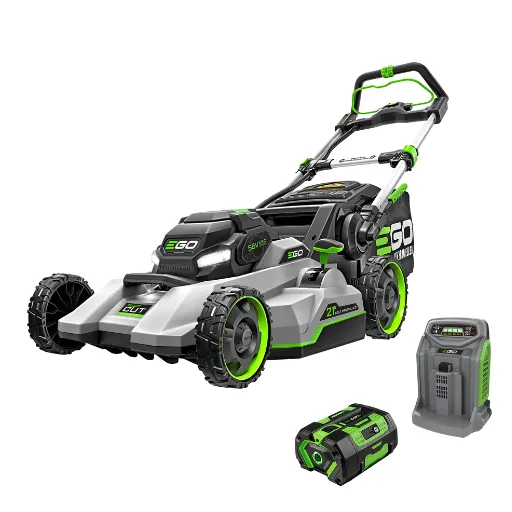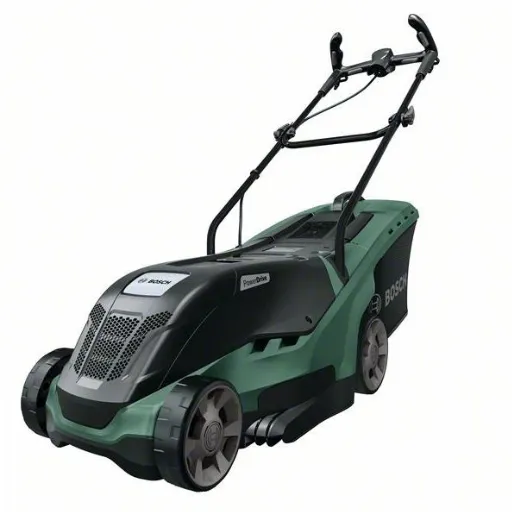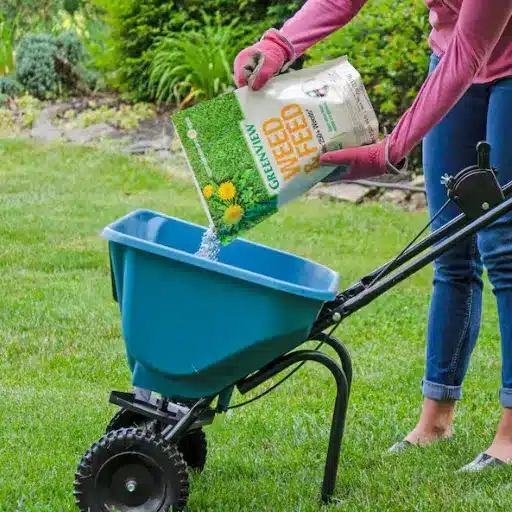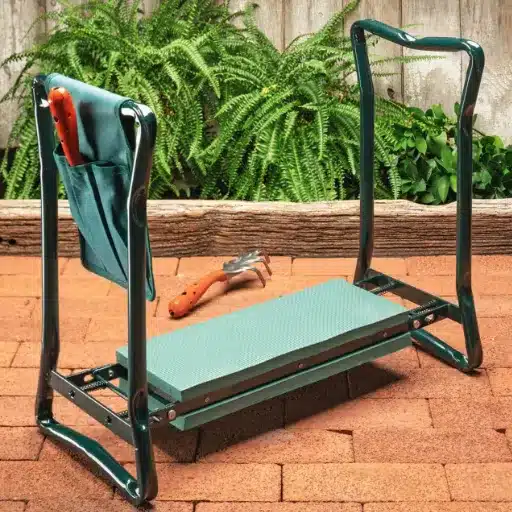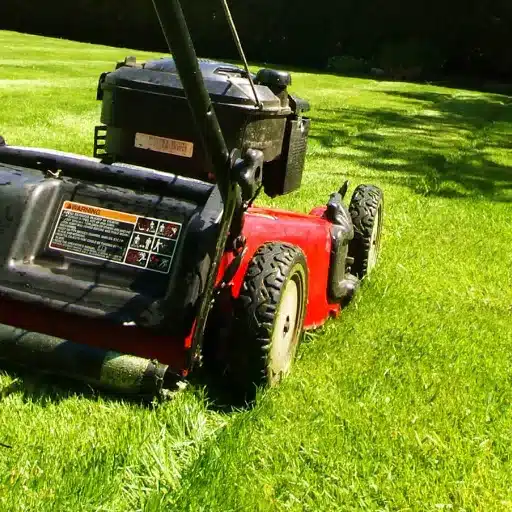In innovative design and precise crafting, laser cutters and engravers reign supreme when it comes to bespoke tools for creators of all industries. Whether you are a professional looking to improve production workflows or a hobbyist looking to enhance your DIY projects, achieving your goals starts with choosing the optimum machine. This guide simplifies selecting the best laser cutter and engraver by examining the key factors that involve specifications regarding power, materials that it can work with, needed software, and budget considerations. By examining these factors, you will appreciate all the technical detail that goes into making an informed decision and achieving your creative goals.
What are the different types of laser cutters available?

CO2 laser cutters: Features and applications
The power source of CO2 laser cutters consists of a gas mixture containing carbon dioxide, nitrogen, and helium. These machines can cut nonmetallic materials like wood, acrylic, glass, plastic, leather, and textiles. They provide precision cuts and engravings, making them quite popular in the signage, engraving, and prototype industries. These machines are much cheaper than fiber or crystal lasers, so small businesses and hobbyists can make good use of CO2 systems. They are not as effective on reflective metals due to challenges with beam absorption, limiting their use in some industrial settings.
Diode laser engravers: Pros and cons
Diode laser engravers are small and cost-efficient devices adapted for most engraving functions but not so much for deep cutting. Recommended materials are wood, cardboard, leather, and some plastic. Diode laser is much cheaper than other lasers, making it easy for personal or small professional users to take advantage of its portability. Besides, they are energy efficient and very easy to operate, so they are perfect for beginners and hobbyists.
Diode laser engravers, however, have significant drawbacks. For example, their power is insufficient for cutting thicker or metal materials. Their engraving speed may be lower than that of more powerful systems such as CO2 or fiber laser. In addition, their power output is also too low for high-precision industrial uses. These systems can be best employed for low-end work where most emphasis is on cost and simplicity rather than performance value.
Fiber laser cutters: When to choose them
As for fiber laser cutters, they are undoubtedly the best option for precision and speed, as well as material versatility. These machines are built for industrial purposes. Thus, they are incredibly accurate when cutting metals such as stainless steel, aluminum, brass, and copper. Even with complex designs, this machine achieves incredible accuracy. They also have high productivity, which significantly benefits any factory’s output. Fiber laser cutters require low maintenance and energy efficiency, eliminating the cost of greater production output. For professionals who need a robust tool to handle demanding tasks, thin metals are much easier to cut with fiber lasers. Unlike CO2 lasers, fiber lasers have lower maintenance and operational costs.
How do I choose the best laser cutter for my specific needs?

When selecting the best laser cutter for your needs, consider the following key factors:
- Material Type and Thickness: Determine the materials you will most frequently work with. Fiber lasers are ideal for metals, while CO2 lasers handle non-metal materials like wood and acrylic more effectively.
- Required Precision and Speed: Fiber lasers offer superior accuracy and faster cutting speeds for intricate designs and high-speed production, especially for thin metals.
- Budget and Operating Costs: Evaluate your initial investment capacity alongside long-term operating costs such as maintenance, power consumption, and consumables.
- Application and Workflow: Consider the scale and type of your operation. A fiber laser is often the optimal choice for industrial applications requiring high productivity, durability, and efficiency.
- Machine Size and Workspace: Assess the laser cutter’s physical dimensions and available space in your facility to ensure it fits seamlessly into your workflow.
By carefully evaluating these factors, you can select a laser cutter that aligns with your project requirements, operational efficiency needs, and budget constraints.
Assessing your project requirements and materials
To choose an appropriate laser cutter, describe the primary materials you intend to work with. Different types of lasers have their advantages. For instance, fiber lasers are suitable for steel, aluminum, and brass, while CO2 lasers work well for non-metals such as wood, acrylic, and glass. For versatility, consider whether a mixed-purpose or multi-functional laser meets your needs.
Secondly, outline the level of detail and the speed of production your projects require. If your work entails a lot of detailed work or pieces, you should focus on automated laser systems with higher accuracy and cutting speed. More fiber lasers shine in these aspects, mainly when used with thin or shiny metals.
Lastly, check if they operate at your scale and workflow. Check the overall bed size concerning material dimensions. Also, see if the premises have sufficient electricity, ventilation, and space for the machine. Aligning the laser’s capabilities with your needs ensures optimum performance and return on investment.
Comparing laser power and cutting capabilities
In considering the power of a laser and its cutting abilities, I focus first on the thickness and type of material that needs to be processed. For cutting thick or dense materials like steel plates, lasers above 1000W are perfect as they render immaculate cuts. Lower wattage options can be used to conserve energy for thinner materials or tasks requiring detailed work. Furthermore, I consider edge quality and kerf width; higher laser power usually results in distinctive narrow kerf and smooth edges. With these, however, I’ve learned that the precision and quality depend on the application’s purpose.
Evaluating ease of use and software compatibility
While assessing a laser cutting machine’s usability, I focus on the user interface and the available training materials because they highly affect operational productivity. An intuitive interface with labeled buttons would work best during training because it significantly reduces learning time. In addition, those who provide thorough manuals, customer support, and video guides are easier to use because their users can bypass many technological problems faster.
Software compatibility is equally crucial. Advanced laser scanners and cutters must accept various file types, including DXF, SVG, or PDF, for increased functionality with different design applications. Integrating commonly used CAD/CAM tools should allow undisturbed movement between designing and operating the machine. Moreover, I consider how easily system updates can be conducted and the provision for firmware updates for sustained efficacy and compatibility with future technologies. Choosing a multifunctional machine with sound, precise software makes work processes more manageable and increases overall performance.
What are the top features of a laser cutter and engraver?

When evaluating a laser cutter and engraver, key features to consider include:
- Laser Power and Material Compatibility – Determine the wattage needed for your projects and ensure compatibility with the materials you intend to cut or engrave, such as wood, acrylic, metal, or glass.
- Precision and Cutting Speed – Look for machines with high-resolution capabilities and adjustable speed settings to balance detailed workmanship and productivity.
- Work Area Size – Assess the dimensions of the work area to ensure it accommodates your project sizes, whether you need small-scale precision or large-format capability.
- Safety Features – Important safety mechanisms, such as enclosed designs, emergency stop buttons, and certified air filtration systems, ensure operator safety during use.
- Ease of Maintenance – Opt for machines with accessible components for cleaning and maintenance to minimize downtime and extend the equipment’s lifespan.
- Customer Support and Warranty – A robust warranty and responsive technical support ensure reliability and peace of mind for professional and personal use.
By prioritizing these features, you can select a laser cutter and engraver that suits your needs while ensuring long-term performance and value.
Laser power and cutting speed
The laser power and speed of the cutter are fundamental characteristics that influence the effectiveness and quality of laser cutting and engraving work. A higher power setting, usually indicated in watts, allows the cutting of thicker or more compact materials, such as metals and hardwood. Lower power settings work well for detailed engraving on softer surfaces like acrylic or leather. Cutting speed should always be measured in millimeters per second (mm/s) as it must be adjusted to the right type and thickness of the material to achieve optimal results without affecting the quality of the edges.
All the same, there must be a trade-off between power and speed for optimal results. Low power can result in poor precision at low speeds, but high levels of control can cause the materials to warp or burn. Moderate speed with medium power is preferable for wood and plastic, whereas clean cutting of more complex materials requires higher power at slower speeds. The laser cutter should allow fine optimization for a broader range of materials and applications.
Working area and material thickness capacity
An essential aspect within the working space of a laser cutter is the area of the material, which can be processed in a single instance. This aspect is crucial for bulk-scale designs or batch processes. However, as is the case for most avid hobbyists or small businesses, standard desktop models range in working area from 12×20 inches up to 24×36 inches. While these measurements are common for cup and desktop models, there are industrial versions whose measurements exceed these, thus providing more freedom for large-scale projects. Another equally critical aspect is material thickness capacity, which is how laser cut or engraved it can go at its deepest. Starting machines usually manage up to a quarter of an inch for soft materials like wood or acrylic. In contrast, high-powered industrial models can cut metals and thicker materials for 1 inch or more. Hence, ensuring one selects a machine with the appropriate working area and thickness capacity dramatically increases the chances of fitting with specific project requirements.
Safety features and enclosed designs
Users of modern laser cutters are protected by several safety features that comply with relevant regulations. An example would be the ‘enclosed’ design, whereby lasers are housed within an enclosure to restrict exposure to harmful radiation. Many of these systems also use interlock features that automatically cut off power when the enclosure is opened to prevent exposure to the laser. Furthermore, integrated ventilation systems and filters are also used to control fumes and particulates emitted by the laser during cutting or engraving, reducing the risk to health. More advanced machines use comprehensive monitoring systems to detect fire sensors and emergency buttons to control possible risks. It is critical for the safety and operational efficiency of the operator to choose a laser cutter with strong safety features and a fully enclosed design.
Which laser cutters offer the best value for small businesses?

Cost, functionality, reliability, and usability must be considered when assessing the most suitable laser cutters for small businesses. One of the options available in the market is the Glowforge Plus, which has an easy-to-use interface and great versatility for cutting and engraving tasks. The OMTech 40W CO2 Laser Cutter is an excellent fit for entrepreneurs looking for more budget-friendly options because of its cost-effectiveness and functionality. It is best suited for small-scale operations. Another powerful competitor is the Dremel LC40 due to its impressive safety features and the highly intuitive software that suits first-time users. Ultimately, the decision will rest on the business’s precise needs, ranging from the type of material used, the size of the workspace, and the production volume.
Budget-friendly options for startups
Startups focused on inexpensive laser cutters should look for a model that performs well but is also affordable. The OMTech 40W CO2 Laser Cutter is recognized as an economical option because it performs reliably for small tasks and is cheap. Its compact design also fits within small workspaces. Another good suggestion is the K40 Laser Cutter, which is known for its low price and ease of putting together but comes with less performance and requires more time investment from users to modify it for better performance. The NEJE Master 2S Plus is the last suggestion, and it serves as a lightweight and portable option that works well with engraving. It is affordable And fantastic for businesses that are testing out different materials. All the machines provide low prices alongside features most important for small business owners who need to meet their production demands without a large budget.
Mid-range laser cutters with advanced features
I suggest the Glowforge Plus, OMTech 60W, and Dremel LC40 in the listed mid-range laser cutters. The Glowforge Plus is known for its easy-to-use interface and advanced cloud software, which is excellent for businesses looking to scale up their operations. In contrast, the OMTech 60W laser cutter is suitable for money as it offers high-power cutting and a larger workspace, making it ideal for a broader range of detailed and more extensive projects. On the other hand, the Dremel LC40 is perfect for professionals because it combines superior accuracy with safety and UL certification. These models are suitable for startups and growing companies focused on achieving a high standard of work as they combine advanced features with affordability.
High-end machines for professional-grade results
The most sought-after high-end laser cutters are the Epilog Fusion Pro, Trotec Speedy 400, and Boss Laser HP-5598. These models are popular for their performance and accuracy in pro-level work. The Epilog Fusion Pro is distinguished by its unrivaled engraving speeds of 165 inches per second. It also integrates IRIS™ camera positioning technology for accurate material placement, making it easier to work with. Its dual-source laser options, CO2 and fiber, improve versatility so that it can be used with various materials.
The Trotec Speedy 400 stands out for its patented ergonomic construction and proprietary Sonar Technology for dynamic focusing, making it suitable for quick and detailed projects. It is built for industrial purposes and is highly productive while requiring low maintenance. Unlike Boss Laser HP-5598, it has a rugged design, high accuracy, and multi-functionality. Its USA Built-in assembly guarantees unmatched durability, while the RF metal tube laser maintains precise precision for a longer lifespan.
These advanced machines are designed for larger businesses needing speed, fidelity, cutting quality, and reliable results on every task. While the base price is at the higher end, with investments comes unmatched prowess for effortless scaling in the long run.
How do I maintain and optimize my laser cutter for best results?

Maintaining and optimizing a laser cutter is crucial to prolong its lifespan and guarantee performance. Initially, clean all optics, lenses, mirrors, and such at regular intervals to prevent the build-up of residue that can affect the quality of the laser beam. Ensure there are no obstructions in the machine’s exhaust system and that it works proficiently to eliminate smoke and debris. Regularly scheduled filter exchanges should be done to guarantee maximum airflow. Check the alignment routinely, as misalignment of optics will affect the precision and power of the optics. Make sure to rid the workstation of excess dust and any leftover materials that could obstruct the functionality of the laser cutter. Inspect moving components like belts and rails and lubricate them as necessary to avoid wear and tear. Remember to follow the manufacturer’s designed protocol when carrying out maintenance tasks to ensure the proper function of the cutting and engraving features. Make a point to regularly check if the firmware and software of the device are updated to the latest versions.
Regular cleaning and maintenance tips
I ensure that my laser cutter is functioning correctly and efficiently by adhering to the guidelines provided with best practices and advice from my intensive research. To maintain beam quality, I clean the optics, including lenses and mirrors, using non-abrasive cleaning solutions that do not damage the equipment. Also, I regularly check and clear the exhaust system to ensure no blockages in airflow. As a means to keep my work area tidy, I have also been checking the moving parts, like the belts and rails, as well as the mirrors, to ensure that there are no operational issues. Furthermore, I have followed the manufacturer’s maintenance guidelines, installed the necessary updates, and maintained optimal performance.
Proper laser alignment and focus techniques
The operation and cut quality of the lasers are primarily influenced by accurate laser focus and alignment. The alignment process usually starts by examining the path followed by the laser beam. The mirrors should not show any sign of deviation during the reflection. If there is some deviation, the position of the mirrors and the laser source are adjusted so that the beam focuses on the center of the target. The tools made by the manufacturer can be used to improve the accuracy of this process.
Focus adjustment is significant for selecting the focal length that needs to be applied based on the material thickness and the required cutting depth. Many laser systems come with auto-focus options, although sometimes a manual focus may have to be made for specific jobs. The process involves changing the distance of the focal lens from the surface of the material being cut to the optimal one. The accuracy of focus needs to be tested through a focus ramp test where several cuts are made, each at different focal heights, until the sharpest and cleanest cut possible is reached.
For the most fantastic accuracy, the laser beam should be separated from the focus and set before each major work begins or when changing the materials. Adjustments should be made according to the manufacturer’s recommendations and aid switching to achieve precision and acceptable performance. Some periodic readjustments may also become necessary because of tool and bearing wear, vibration, or other accuracy-disturbing factors.
Upgrading components for improved performance
The first step in improving the performance of any laser system lies in identifying the problem area, which in this case is the machine’s components. From my findings, numerous experts replace the lower-power laser tubes with higher-wattage ones to enable faster cuts and thicker material processing. Another popular enhancement is the addition of a high-powered lens to the engraver, which improves detail and focus. Industry-grade water chillers are another addition that can upgrade efficiency and long-term operation. These factors and a more powerful exhaust system can guarantee safe fume and debris extraction while maintaining machine efficiency. When these upgrades are done, increased reliability and output can be obtained in conjunction with regular service of the equipment.
What safety precautions should I consider when using a laser cutter?

Follow these safety measures to ensure a laser cutter’s safe and proper use. First, make sure to wear eyewear that protects against the specific wavelength of the laser. This will mitigate any risk of harming your eyes. The area in which the laser cutter is used ought to be ventilated, or at the very least, the cutter is equipped with an exhaust system. This will help get rid of dangerous fumes and particulates. Components such as mirrors, lenses, and machine alignment should be regularly checked to ensure proper functioning and safety from any potential harm. Leaving a laser cutter unattended poses fires or other life-threatening conditions; hence, the apparatus should never be left unattended. These areas also require clear signs indicating where patients should not walk to avoid dangerous electric parts. After taking these measures, a user can confidently turn on a laser cutter.
Understanding laser safety classifications
The various types of lasers put under classification were made by consideration of the danger involved with exposure to the laser light. The Classes of lasers range from Class 1 to Class 4, with Class 1 being the least dangerous and Class 4 having significant hazards such as fire outbreaks and grave injuries to the eyes or skin. Class 1 lasers are safe to use prima facie, and Class 2 lasers, which are powered, operate on a blink reflex mechanism to cut off eye exposure. Class 3, which is grouped in 3R and 3B class types, differs based on the power level, with 3B being more powerful and much more restrictive than 3R. Class 4 has strict regulations on how they are used because they are capable of causing severe destruction as well as explosions. Now, it is easier to understand why the users of lasers must abide by and follow the safety protocols, relying on the classification of the said device.
Proper ventilation and fume extraction
It is essential to have a proper ventilation system and fume extraction equipment when running a laser cutter machine so that the dangerous fumes do not settle and the particulates do not flow into the air. It is common for many materials to emit VOCs, particulates, and other materials at the time of laser cutting, which is highly injurious to health and can damage the equipment. In most well-designed fume extractors, HEPA and activated carbon filters are incorporated to cleanse the particulates and dangerous chemical elements effectively. Moreover, local exhaust ventilation (LEV) should be used near the laser cutter machine to ensure emissions are captured and extracted immediately at the source. While ensuring that the rate of airflow is sufficient, filters are routinely serviced, and standards for ventilation are met, it protects the operator and the environment and increases equipment service life. Specific ventilation devices should be installed safely, according to the local industrial rules, to prevent risks created by serving long periods in a contaminated atmosphere.
Personal protective equipment for laser cutting
While laser cutting, ensuring safety during the process requires using essential personal protective equipment (PPE). These measures include putting on laser safety goggles adapted to the laser’s output wavelength to prevent eye radiation. In addition, I use protective gloves that withstand heat to avoid burns and cuts on my hands and flame-resistant garments that inhibit injury from sparks or hot fragments of material. Furthermore, a properly fitted respirator is necessary to protect against inhalation of harmful fumes and particulate matter from the work. Complying with these PPE rules allows me to reduce dangers and enhance safety during laser cutting procedures.
How can I maximize my laser cutter’s versatility for various projects?

To fully exploit your laser cutter’s flexibility, your first step should be learning the material compatibility of your device. It is crucial to try different materials like wood, acrylic, metal, or fabric to ensure that the cutter operates at its best and to set up the machine’s configuration to optimize cuts and engravings. Set the laser power, speed, focus, and other variables relevant to the job. There are also a lot of possibilities for using design software that can be turned into new projects with more complicated patterns and more acceptable, detailed work. In addition, modular peripherals, such as rotary tools, increase the range of objects the cutter can work with. Regular maintenance, like cleaning the lenses and checking the alignment, increases the machine’s accuracy and efficiency for different tasks.
Exploring different materials for laser cutting and engraving
When searching resources for laser cutting and engraving, the thickness of the material, its composition, and its suitability for my specific laser cutter are always of key consideration. Materials like wood, acrylic, and leather should work immensely well for cutting and engraving since they are responsive to the adjusted laser settings. For metals, I look at anodized or coated metals unless I have a fiber laser that can engrave them. Glass and ceramics are more suited for engraving than cutting. Testing each type of material guarantees no compromise with fury quality or performance.
Combining cutting and engraving techniques
The integration of cutting with engraving makes it possible to manufacture complex and valuable designs with more detail and flexibility. The power and speed of the laser need to be adjusted to suit the specific material being utilized to get the best possible results. For instance, high power settings are better for cutting thicker materials, while lower power and higher precision are better for detailed engravings. Design software, including CorelDRAW or Adobe Illustrator, allows most of these complications to be solved by enabling users to streamline both processes in one project. This is done by setting layers for both cutting and engraving paths.
One of the techniques is to engrave before cutting delicate materials such as wood or acrylic to ensure that structural integrity is maintained. In addition, cleaning the laser bed after every task and ensuring good airflow prevent residue from building up and blocking the next task’s accuracy. Depth mapping is a technique that can enhance the three-dimensional appearance of engraved designs. In contrast, the intricately crafted positioning allows easy transitions between patterns that are cut and those that are engraved. With rigorous testing and precision adjustment of the machines, ease in multi-layered projects, aesthetic outcomes, and the overall structure are enhanced.
Expanding your business with diverse laser applications
Broadening your business through various laser applications requires an awareness of market gaps and husbanding the flexibility of laser technology. From engraving consumer items to industrial-grade cutting, suppliers can penetrate multiple industries like manufacturing, retail, and design. Offering services like custom branding, complicated sign making, or developing models can bring a varied clientele. Furthermore, keeping pace with advancements like laser marking for electronics or even medical devices will mark your business as a forefront innovator. Adequate training and investing in reliable equipment will enhance customer satisfaction and ensure growth in challenging business environments.
References
Frequently Asked Questions (FAQ)
Q: What factors should I consider when choosing a laser engraver and cutter?
A: When choosing a laser engraver and cutter, consider the laser type (CO2, diode, or fiber), power output, work area size, materials you plan to cut or engrave, safety features, and budget. For home use, enclosed laser engravers are often preferred for safety reasons. Also, consider whether you need a portable laser or a desktop laser engraver for your specific needs.
Q: What is the difference between a blue and infrared laser?
A: Blue lasers, typically diode lasers, have a shorter wavelength (around 445nm) and are excellent for cutting and engraving metals and plastics. Infrared (IR), often CO2 lasers, have a longer wavelength (around 10,600nm) and are better suited for cutting and engraving organic materials like wood, leather, and acrylic. Blue diode lasers are becoming increasingly popular for their versatility and affordability.
Q: What is the best laser engraver for beginners?
A: For beginners, a desktop laser engraver with a diode laser cutter is often the best choice. Look for models with user-friendly software, safety features, and moderate power output (like a 6W laser). Enclosed laser engravers are also great for beginners as they provide added safety. Some popular options include the Glowforge Basic, Ortur Laser Master 2 Pro, and xTool D1 Pro.
Q: How do I choose a laser cutter for home use?
A: When choosing a laser cutter for home use, consider factors such as safety (opt for an enclosed laser engraver or a Class 1 laser), size (desktop laser engravers are ideal for most homes), power (20-40W lasers are suitable for most home projects), and versatility (ability to engrave and cut various materials). Also, the noise level and ventilation requirements must be considered.
Q: What materials can be used with a laser engraving machine?
A: Laser engraving machines can work with various materials, depending on the laser type and power. Common materials include wood, acrylic, leather, glass, paper, cardboard, and metals. CO2 lasers are great for organic materials, while fiber lasers excel at metal engraving. Diode lasers, especially blue ones, can handle various materials, including thin metals.
Q: What is the difference between CNC and galvo lasers?
A: CNC lasers typically use a moving laser head that travels across the work area, which is suitable for cutting and engraving larger pieces. Galvo lasers use mirror systems to direct the laser beam, allowing for much faster engraving speeds but usually with a smaller work area. Galvo lasers are often used for high-speed marking and engraving, while CNC lasers offer more versatility for cutting and engraving.
Q: Is it possible to build a DIY laser engraver?
A: Yes, it’s possible to build a DIY laser engraver using laser kits for CNC machines. These kits often include a laser module, control board, and necessary components. However, it’s crucial to prioritize safety when working with lasers. Many enthusiasts start with lower-powered lasers (like a 6W laser) and enclosed designs. Building a DIY laser can be rewarding but requires careful research and precautions.
Q: What safety precautions should I take when using a laser engraving and cutting machine?
A: Safety is paramount when using laser equipment. Always use protective eyewear designed for your specific laser wavelength. Ensure proper ventilation to remove fumes and particles. Use an enclosed laser engraver or add enclosures to open systems. Never leave the laser unattended while in operation. Be aware of fire risks, significantly when cutting wood or other flammable materials. Lastly, all manufacturer guidelines and local regulations regarding laser use must be followed.



